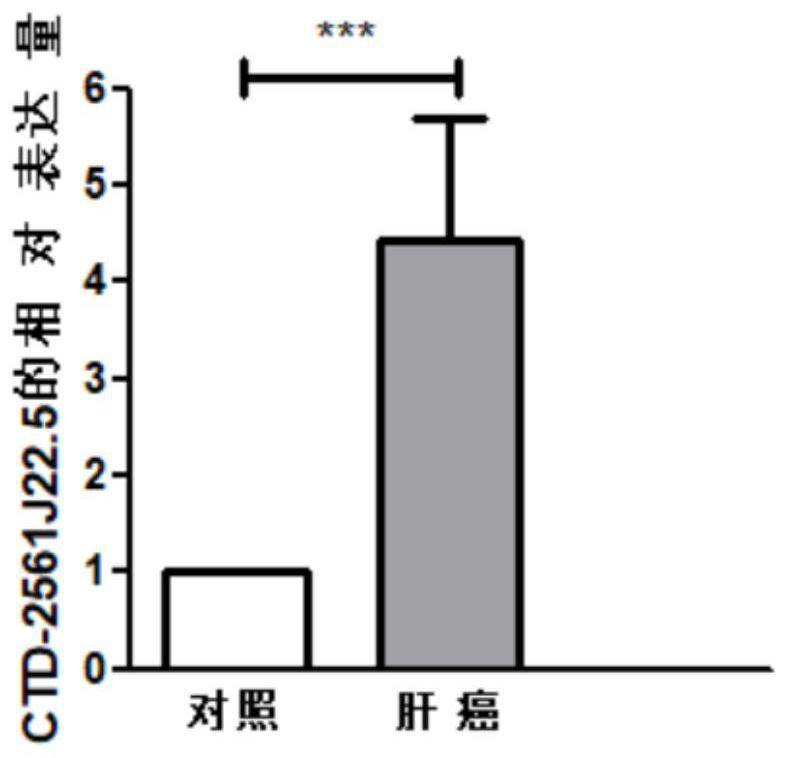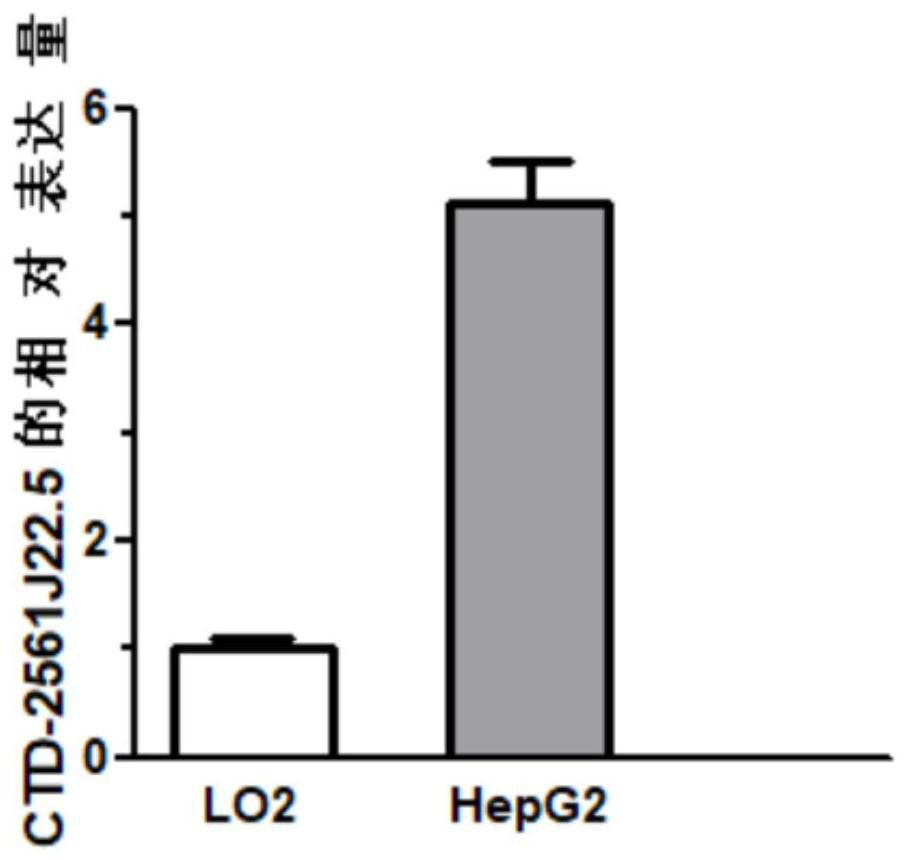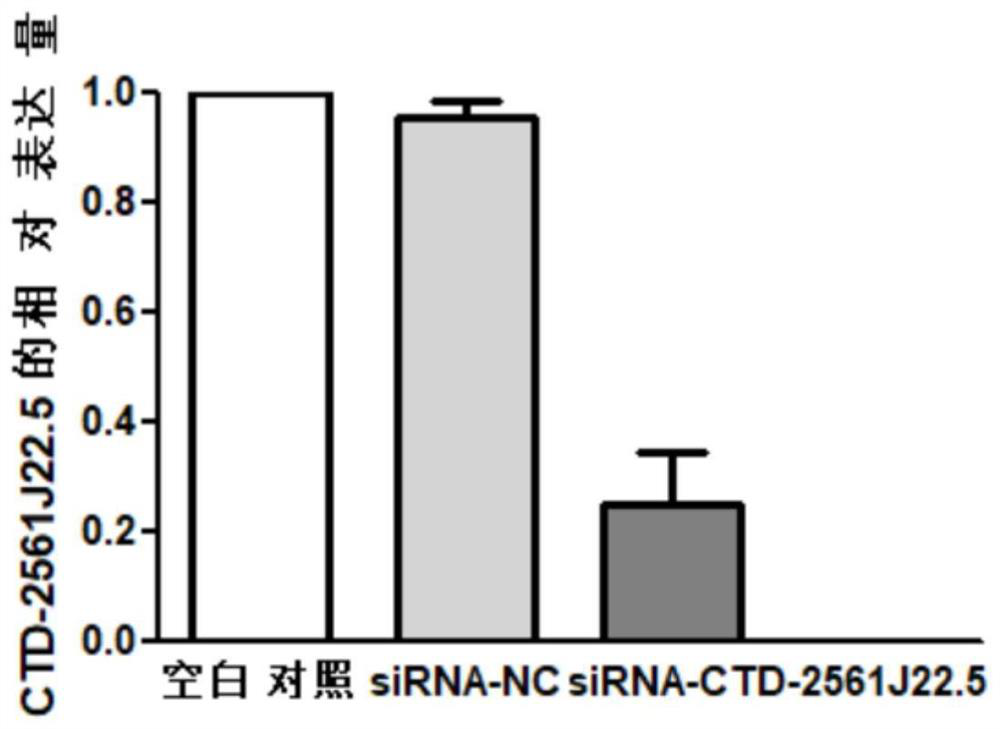Reagents for detecting and targeting lncRNA biomarkers and their application in hepatocellular carcinoma
A technology of hepatocellular carcinoma and reagents, applied in the direction of microbial determination/testing, DNA/RNA fragments, recombinant DNA technology, etc., can solve the problem of unsatisfactory long-term prognosis
- Summary
- Abstract
- Description
- Claims
- Application Information
AI Technical Summary
Problems solved by technology
Method used
Image
Examples
Embodiment 1
[0055] Example 1 QPCR sequencing verification of the expression of the CTD-2561J22.5 gene
[0056] 1. Sample collection
[0057] A total of 42 cases of liver cancer tissues and corresponding normal paracancerous tissues were selected from patients diagnosed with liver cancer. All patients who were enrolled in the group had not received chemotherapy or radiotherapy before surgery.
[0058] 2. Trizol method to extract RNA from samples
[0059] Total RNA was extracted from tissue samples using Trizol reagent. Cut the tissue with scissors, add 1ml pre-cooled TRizol, and mix until a transparent solution. Transfer the lysate to a 1.5ml centrifuge tube and place it at room temperature for 5 minutes to completely separate the nucleic acid-protein complex. Chloroform was added, shaken, and centrifuged. Transfer the colorless supernatant to another centrifuge tube, add isopropanol to the supernatant, let it stand, centrifuge, remove the supernatant, add ethanol, centrifuge, remove t...
Embodiment 2
[0073] Example 2 Silencing of CTD-2561J22.5 gene and its influence on cells
[0074] 1. Cell culture
[0075] The liver cancer cell line HepG2 and the normal cell line LO2 were purchased from ATCC. All cell lines were cultured in DMEM containing 10% fetal bovine serum and 1% P / S at 37°C, 5% CO 2 cultured in an incubator. The cell growth was observed every day, and the medium was changed every other day.
[0076] 2. Transfection
[0077] The siRNA against CTD-2561J22.5 was designed and synthesized by Shanghai Jima Pharmaceutical Technology Co., Ltd., the specific sequence is 5'-AACAUGUUUUCUUCUCAUGAU-3', SEQ ID NO.5; the antisense strand is 5'-CAUGAGAAGAAAACAUGUUUA-3', SEQ ID NO.6, the control is general siRNA-NC.
[0078] According to the instructions of Lipofectamine 3000 reagent, mix the liposome and OPTI-MEM reduced serum medium, siRNA and OPTI-MEM medium separately, leave at room temperature for 5min, then mix the liposome, siRNA and OPTI-MEM medium, Leave it for 20min....
PUM
 Login to View More
Login to View More Abstract
Description
Claims
Application Information
 Login to View More
Login to View More - R&D Engineer
- R&D Manager
- IP Professional
- Industry Leading Data Capabilities
- Powerful AI technology
- Patent DNA Extraction
Browse by: Latest US Patents, China's latest patents, Technical Efficacy Thesaurus, Application Domain, Technology Topic, Popular Technical Reports.
© 2024 PatSnap. All rights reserved.Legal|Privacy policy|Modern Slavery Act Transparency Statement|Sitemap|About US| Contact US: help@patsnap.com










